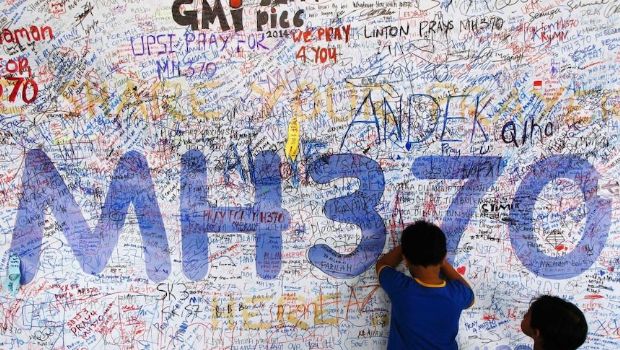Malaysia Airlines flight MH370 left ‘false trails
The pilot in command of missing Malaysian Airlines flight MH370 deliberately made a series of turns to avoid detection before flying the doomed plane into the southern Indian Ocean, according to research that relies on new aircraft tracking technology.
Key points:
The significant number of changes of track and speed suggest that there was an active pilot during the flight, the study says
Two searches, one co-ordinated by Australia, and the second by Malaysia, scoured a vast area of ocean in the southern Indian Ocean, but failed to find any trace of the plane
Mr Godfrey says applying new technology to the search could provide “credible new evidence that was not available during the previous underwater searches”
The research indicates the Boeing 777 crashed around 34.5 degrees south, which aligns with previous searches for the plane, but that its flight path was “significantly different” from earlier theories based on satellite data.
Instead, the pilot Zaharie Ahmad Shah had made numerous turns and changed speed to avoid commercial flight routes and leave “false trails” on unofficial routes around the western end of Indonesia and the Indian Ocean.
Aerospace engineer Richard Godfrey — a member of the so-called Independent Group of Scientists set up to try to solve the MH370 mystery — says global tracking of aircraft is possible using weak radio signals that cover the globe, known as WSPR, or the “weak signal propagation report” network.
He says any plane — commercial, private or military — will set off invisible “electronic tripwires” as they cross these signals, which can then be used to trace their location.
“WSPR is like a bunch of tripwires or laser beams, but they work in every direction over the horizon to the other side of the globe,” Mr Godfrey says.
He says these radio signals can be used in conjunction with data sent from the Malaysian Airlines plane to Britain’s Inmarsat satellite, to help solve the mystery of MH370.
‘Flight path appears carefully planned’
Mr Godfrey — seen as one of the world’s leading investigators of the MH 370 disappearance — invented his own aviation tracking system known as GDTAAA (Global Detection and Tracking any Aircraft Anywhere Anytime) to analyse these WSPR signals every two minutes over the specific period that MH370 was in the air, in March 2014.
His analysis points to a crash site at 34.5 degrees south, south-west of Western Australia, near the imaginary line known as the “seventh arc” — which shows possible locations of the plane at the time of its seventh satellite “ping”.
Malaysia Airlines flight MH370: Timeline of events
A look back over how events unfolded following the disappearance of Malaysia Airlines flight MH370.
Read more
The findings are largely consistent with previous analysis of the plane’s satellite data and of the location of floating debris from the plane, which also suggest it crashed into the southern Indian Ocean.
But Mr Godfrey’s research suggests the pilot had changed direction and speed multiple times to avoid giving any clear idea where he was heading.
Source:https://www.abc.net.au/news/2021-05-05/malaysia-airlines-mh370-series-of-turns-before-disappearing/100116446











